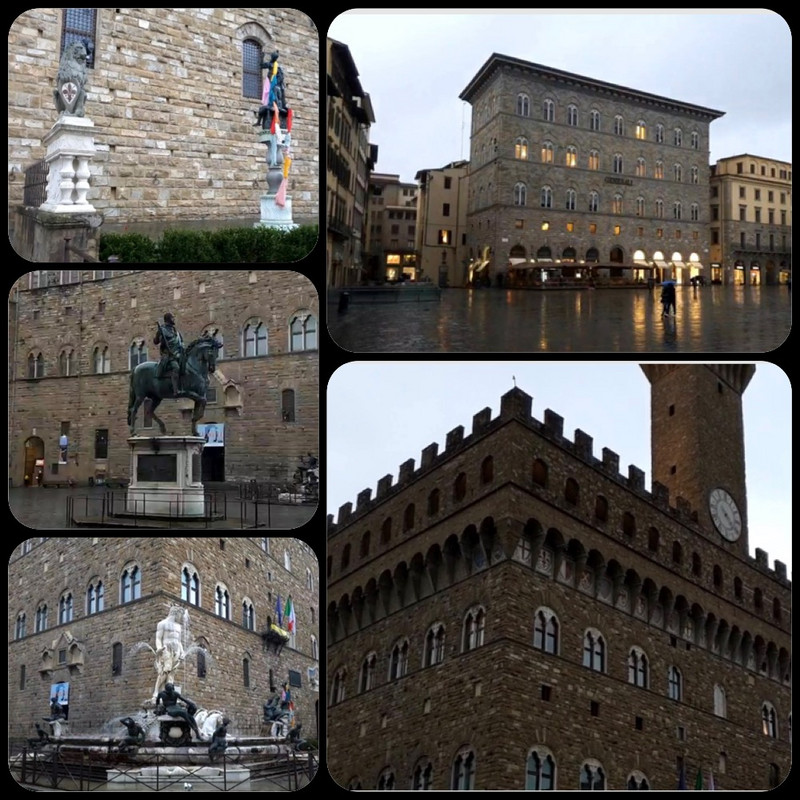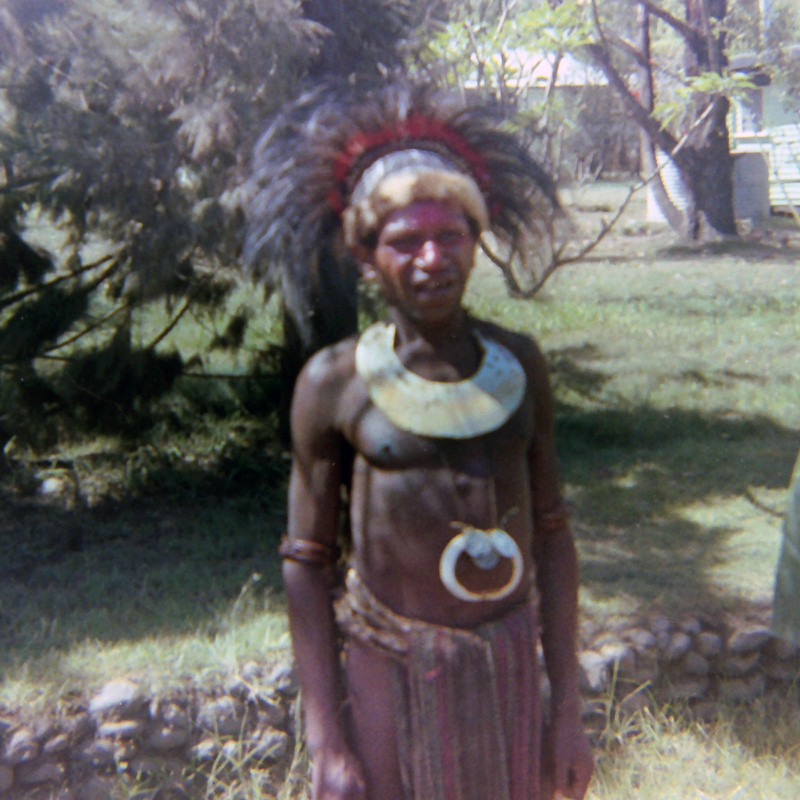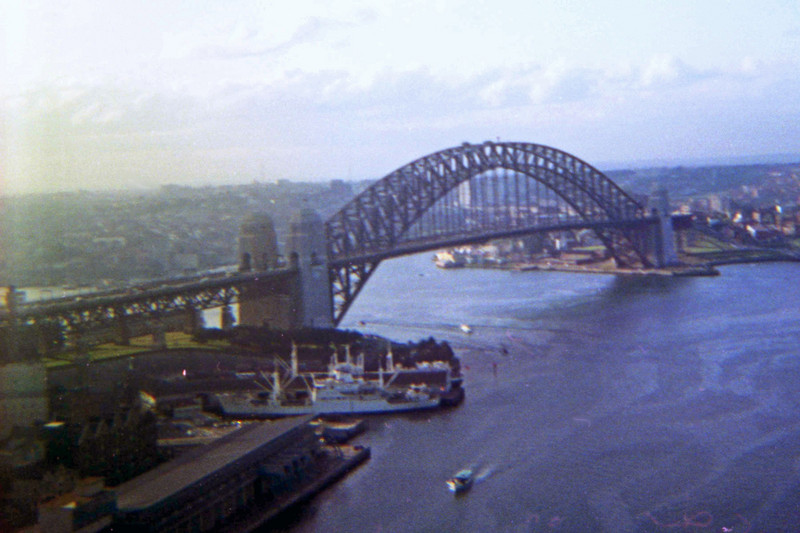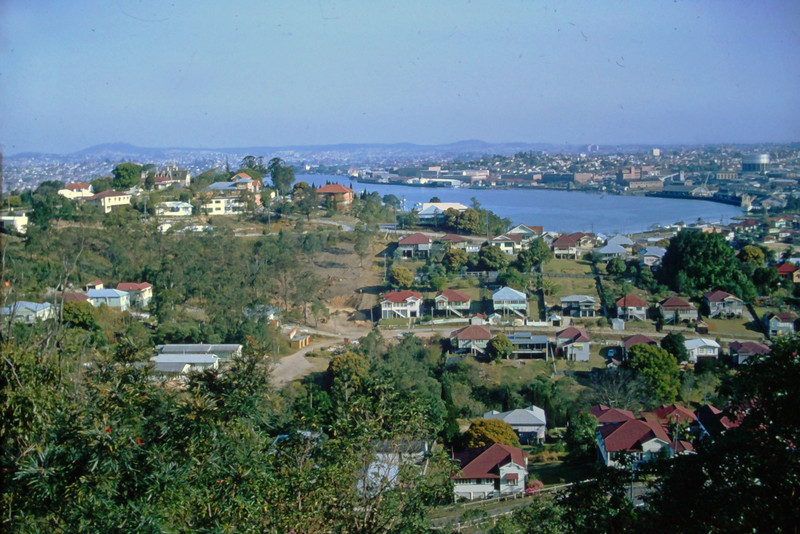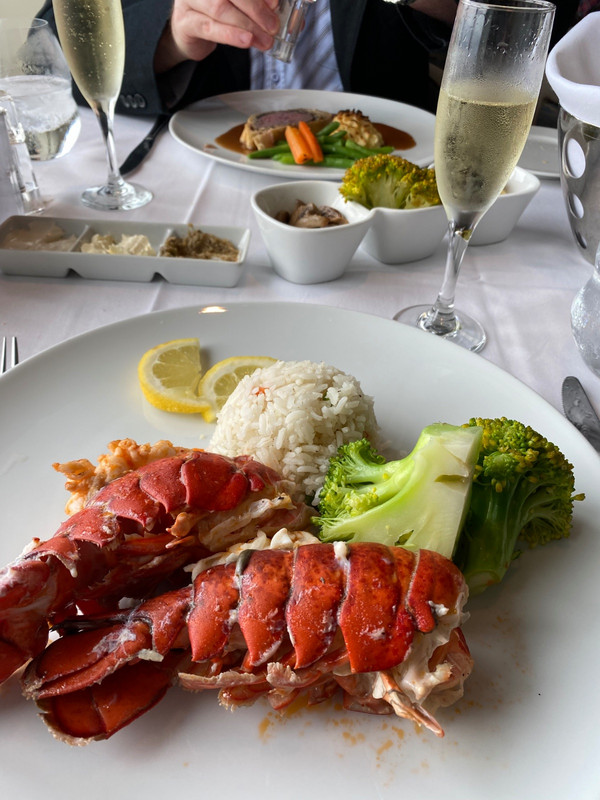The last time I was here was back a few years ago and we sat with friends in the square and enjoyed strawberries and cream in the sunshine.
The Town Hall is among the most impressive town halls of Tuscany, overlooking the square with its copy of Michaelangelos David statue as well the gallery of statues in the adjacent Loggia with its sculpture gallery of antique and Renaissance art.
Another feature is the beautiful fountain of Neptune, the statue is also known as the Biancone (great white) on account of the brilliance of its marble.
The figure of the sea god on a chariot drawn by four horses is ringed by three young Tritons and four figures that represent the ocean spirit Doris, her daughter Thetis the Nereid, and two other marine divinities.
The Ponte Vecchio is a symbol of Florence and it is also the Arnos oldest crossing: a bridge has stood in that position – the narrowest part of the rivers urban stretch – since Roman times, but its older versions were constantly damaged and torn down by floods. After the Lungarno riverbanks were added, the bridge was rebuilt in 1345, this time with three segmental arches.
In 1442, the citys authorities for cleanliness obliged butchers to move their stores on to the Ponte Vecchio to isolate them from the city centre and allow them to dispose of their waste directly into the river. From that moment on the bridge became a meat market, and the butchers, who had subsequently gained ownership of the shops, added extra little rooms to increase space, suspended above the river and supported by wooden poles.
In 1565 Vasari Corridor for Cosimo I dei Medici, the walkway connecting the Palazzo Vecchio with the Pitti Palace was built and today without the hoards of tourists what
Due to the stench from the trading fishmongers, butchers and tanneries in 1593 they made way for goldsmiths and jewellers. The shops on the bridge remain exclusively jewelers and goldsmiths, making the Ponte Vecchio the perfect destination for a day of shopping especially on a virtual trip! Several of these shops have retained the wooden shutters.
The Ponte Vecchio of three wide, low arched segments, the first bridge to be built in this way in the western world, moving beyond the Roman model with its many arches that easily clogged during a flood.
Interesting fact: the Ponte Vecchio was the only bridge in Florence not to be blown up by the Germans during World War II.
